Key Points:
- Verizon is now selling a 5G integrated laptop, with an unlimited data plan!
- AT&T has begun to use DSS (Dynamic Spectrum Sharing) to layer 5G on top of 4G/LTE bands.
- T-Mobile has been showing off what is possible when you combine low, mid, and high-band 5G together.
- More and more "5G Ready" gear is coming to market.
It has been a while since our last update on the state of 5G (fifth generation cellular) - and a lot has been happening.
All the carriers have recently shared 5G updates worth bragging about, and there is an increasing amount of 5G compatible and "5G Ready" gear coming to market.
It is still VERY early days in 5G era - here's an update on where things currently stand.
Table of Contents
5G Video Update Story
Subscribe to our YouTube Channel
Verizon: Flex 5G Laptop & Unlimited Data Plan
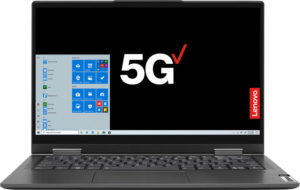
Verizon has announced the availability of the Lenovo Flex 5G - the first of a new category of laptops built with ARM processors and an integrated 5G modem.
Perhaps even more interesting than the laptop itself is the new "5G Ultra Wideband Connected Device Plan" that goes along with it - which is a rare Verizon plan that actually offers unlimited laptop computing data on both 4G and 5G networks.
Here is what the plan allows when on Verizon 5G Ultra Wideband:
- Unlimited access to 5G Ultra Wideband
- Unlimited access to 5G Ultra Wideband Hotspot
- Unlimited 4K HD-quality streaming video
And when on Verizon 4G LTE:
- Unlimited 4G LTE data (Network Managed after 15 GB)
- "Unlimited" Hotspot (Throttled to 600 kbps after 15 GB)
- HD-quality streaming video at 720p.
The key unique feature of this plan is that you really do get unlimited usage (even when on 4G), on the Flex 5G laptop itself at least.
If you want to share your connection with other devices, you get unlimited hotspot access when in an Ultra Wideband area, but are stuck with typical Verizon hotspot limits when on 4G/LTE.
Verizon is now selling the Flex 5G for $1,399 - and the data plan is just $30/mo if you have an existing Verizon voice line. The plan is $90/mo standalone.
The plan is currently exclusive to the Flex 5G laptop - but presumably other compatible devices will be offered in the future.

Verizon 5G: Coverage Is The Catch

The catch with the Flex 5G, and Verizon 5G in general, is the incredibly limited coverage.
Verizon has so far rolled out its "5G Ultra Wideband" service in just "limited parts" of 35 cities - with 5G coverage at best covering just a few downtown blocks in each.
The extremely high-frequency mmWave 5G that Verizon is deploying just doesn't have much range - and Verizon still has not announced any firm plans for longer range 5G deployments using other frequency bands.
When Verizon does eventually launch 5G on other frequency bands, it's unlikely they will consider this bands 'Ultra Wideband' - and thus their unlimited hotspot terms may not apply to that wider coverage area.
On the other hand - Verizon's mmWave network is delivering absolutely amazing speeds in the places it has been deployed.
Early testers with the Flex 5G have shared multiple speed tests showing downloads of over two gigabits per second!
AT&T: First With Dynamic Spectrum Sharing

One of the most important 5G technologies being developed is known as Dynamic Spectrum Sharing, or DSS.
DSS will allow carriers to overlay 5G on top of their existing 4G/LTE networks - allowing the carrier to quickly expand their native 5G coverage maps everywhere that 4G/LTE coverage already exists.
Every carrier has been working to eventually embrace DSS to avoid having embarrassing 5G coverage maps - and AT&T can now claim bragging rights for being the first to get this technology deployed to customers in the real world.
AT&T Senior VP Igal Elbaz explained:
“DSS is an important steppingstone on our path to nationwide 5G. We were the first U.S. carrier to deploy this technology in our network, and it’s now playing an important role as we work toward a nationwide 5G footprint this summer.”
AT&T went deep to describe the benefits of DSS:
Simply put, DSS allows carriers to share the same channel between both 4G and 5G users simultaneously. It turns up 5G without turning off LTE – creating a seamless experience for users, and a graceful spectrum transition for carriers.
The term “dynamic” in DSS refers to the ability to allocate resources to each technology based on demand. This requires that DSS is traffic-aware, and able to respond to changes. The performance of DSS will depend in large part on how frequently traffic demand changes and the granularity of the resource allocations.
DSS is an important steppingstone on our path to nationwide 5G. The software-based technology allows us to bypass the process of re-farming spectrum in the near term, which ultimately means a smoother transition and expedited 5G adoption.
Without DSS - carriers need to have unused free spectrum to devote to 5G service, or they need to switch 4G spectrum over to 5G - slowing down 4G in the process.
With DSS, the percentage of the airwaves devoted to 4G and 5G can be balanced in real-time.
AT&T's DSS is just getting started - and A&T has told analysts it is currently only in operation in "parts" of Texas and Florida.
But once AT&T has DSS working smoothly, turning on 5G coverage nationwide may be almost as easy as just sending out a software update to cell towers - and AT&T is claiming to be on track to having nationwide 5G coverage using DSS available by the end of the summer.
In the meantime, AT&T has been pushing ahead to transition a chunk of its current 850 MHz LTE Band 5 spectrum exclusively to 5G, announcing that it has now rolled out 5G coverage on this band to "355 markets" covering 179 million Americans.
But do be aware that even the most advanced 5G radio can not defy the laws of physics - and 5G using the same airwaves as 4G will not perform all that different than "really good 4G".
To really unleash the potential of 5G, additional spectrum bands beyond the existing 4G bands need to be enabled. AT&T also has a number of mmWave cities - but it is lacking in mid-band spectrum essential for 5G performance to really shine.
NOTE: AT&T turning part of LTE Band 5 from 4G to 5G service might impact 4G/LTE coverage and speeds for some customers in areas where AT&T is ramping up 5G. This is why DSS will be so valuable - since adding 5G coverage via DSS will not take away from 4G.
T-Mobile: Shutting Down Sprint’s 5G, and Serving Layer Cake
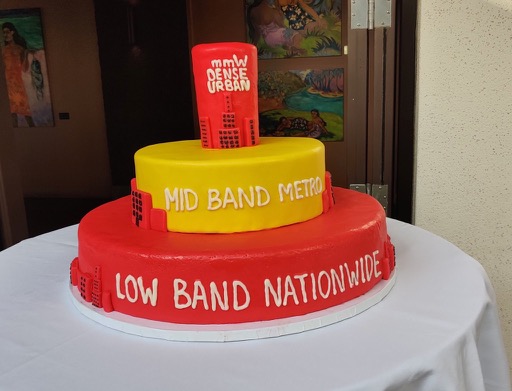
When it comes to having additional spectrum to devote fully to 5G, thanks to its acquisition of Sprint, T-Mobile has jumped into a huge lead.
Sprint may have been the last-place network in the USA, but Sprint controlled more mid-band spectrum than any other carrier.
And since Sprint was struggling - it had never managed to put most of this spectrum to use for 4G, leaving it wide-open for 5G development!
This mid-band spectrum strikes a sweet spot between the long-range capabilities of T-Mobile's 600 MHz spectrum, and the crazy-fast short-range mmWave spectrum.
Now that T-Mobile is in control - it has been working to take advantage of this spectrum, shutting down Sprint's fledgling 5G service and instead integrating Sprint's mid-band into T-Mobile's existing low-band and mmWave 5G deployments.
T-Mobile still has a long way to go to turn on mid-band 5G nationwide, but in New York City T-Mobile has already enabled all three types of 5G spectrum to work together.
T-Mobile has an advantage because it has so much virgin spectrum to tap into for 5G, and it does not need to wait for DSS technology to become perfected so that it deploy 5G on top of its existing 4G/LTE airwaves.
This is just the start - but over the months ahead T-Mobile 5G has the potential to become a leader in both 5G range and speed.
“5G Ready” Antennas, Boosters, and Routers
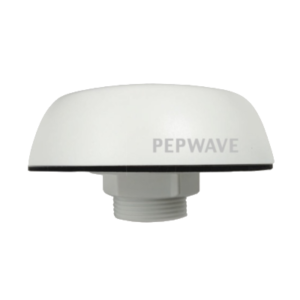
With 5G rising on the horizon - a lot of people are starting to worry about future-proofing their technology investments.
Unfortunately, preparing for 5G in advance can be tricky - and some marketing claims being made are a bit suspect.
Here is some quick guidance...
5G Antennas
When 5G is deployed on top of the same frequencies as 4G/LTE, existing antennas will continue to work no differently than they do today.
But as 5G spreads out to deliver its full potential - both lower and higher frequency ranges will become important, and many existing antennas will perform very poorly on many of these bands.
New "5G Ready" antennas are being designed to work over the full range of low and mid-band spectrums being planned for 5G - referred to Sub-6 GHz 5G.
To be as future-proof as possible, an ideal wideband 5G antenna should work reasonably well on all bands from 600 MHz - 900 MHZ and 1700 MHz - 6000 MHz (6 GHz).
But it is just not possible to redesign traditional antennas to work well with mmWave 5G. These frequencies require specialized antennas that are expensive and complex, and which must be located within just inches of the 5G modem.
So for the time being - only worry about mmWave compatibility in hotspots and smartphones with internal antennas, not mounted outside on your RV or boat.
For a lot more on 5G antennas, see our newly updated guide:
Mobile Cellular Antennas for RVs and Boats
5G Boosters

As we have discussed, carriers will be deploying 5G over both new bands and repurposed 4G/LTE bands.
And when there happens to be 5G broadcast over bands that a current 4G/LTE booster already supports, it will continue to work even when the signal is 5G.
You see - most boosters are "dumb" and they blindly boost an entire frequency band at once. These boosters have no idea what is being broadcast over that band - whether it is 3G, 4G, or 5G.
So once carriers start turning some of their existing 4G bands over to 5G, or overlaying 5G and 4G simultaneously with dynamic spectrum sharing (DSS) - the "dumb" boosters will continue to work as always.
But these boosters will still only be boosting the bands they are designed for - not any of the new (and generally faster) 5G-only bands.
Dedicated 5G aware boosters that support more frequency bands and faster speeds are still a long ways away, if they ever come to market.
For more on the state of 5G and boosters, see our updated guide:
Mobile Cellular Boosters for RVs & Boats Overview
5G Routers & Hotspots
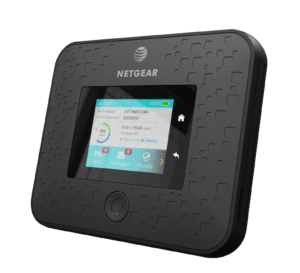
There have been several 5G mobile hotspots that have come to market - but so far all of them have been essentially just functional prototypes intended for very limited use cases.
There are still no mainstream-worthy 5G mobile hotspots on the market in the USA.
This will probably change in the Fall of 2020 - so keep your eyes peeled for new data only flagship devices from AT&T, Verizon, and T-Mobile.
The first wave of 5G capable cellular integrated routers are also in the works, coming later this year from the likes of Peplink and Cradlepoint.
But the first generation of these 5G routers will be expensive and impractical for most mobile users.
More mainstream approachable models will follow in the years ahead.
For more on the state of 5G integrated routers, see our updated guide:
5G Cellular Integrated Routers
Beware: 5G Fakers
As the marketing hype around 5G ramps up, beware of "5G" claims being tacked on to devices that have no actual fifth generation cellular technologies in them.
The classic example of "Fake 5G" is AT&T sticking a deceptive "5GE" service indicator onto recent phones, convincing millions of people that they already had 5G service when AT&T's "5G Evolution" just meant you were on a 4G tower that was "evolving" towards future 5G.
But we have also seen several cellular equipment providers mistakenly label devices compatible with LTE Band 71 as being "5G", likely confused because T-Mobile is using its 600MHz frequency band for both 4G/LTE and 5G deployments.
But just because something uses B71, does NOT make it 5G!
Concluding Thoughts: Keep Waiting, For Now!
 The 5G era is just now starting to get interesting - and we are starting to get a taste of what will be possible.
The 5G era is just now starting to get interesting - and we are starting to get a taste of what will be possible.
Eventually, all carriers will be using DSS to offer 5G everywhere that 4G reaches, every carrier will offer a full layer cake experience combining both range and speed, and there will be a whole host of awesome 5G hardware designed to take advantage of it all - ranging from laptops to phones to tablets to routers.
But we are still in VERY early days of the race!
It is important to remember that 5G is setting the stage for the next decade of cellular evolution, but just like how 4G/LTE built on the foundation of 3G to eventually reach where we are today - 5G will be starting where 4G/LTE is at, and going from there.
Verizon's CEO Hans Vestberg has been trying to manage expectations, saying that many initial 5G deployments will start as "really good 4G" and will get better from there. At a recent investor conference, he shared:
"In the beginning you're going to see some improvements. Over time: Dramatic improvements. But - in the beginning, it's going to be small."
So unless you love to be on the bleeding edge, waiting at least a little bit longer before investing in 5G probably makes sense.
But things are certainly getting more and more interesting by the day!
Looking Ahead to the iPhone 12

It is all but certain that the upcoming iPhone 12 this fall will support 5G - and whether you like Apple or not, there is no denying that Apple's drumbeat drives the entire mobile industry.
Most analysts expect that all the cellular carriers are working to make the iPhone launch the mainstream coming out party for their 5G networks.
This is when we will see the DSS-powered coverage maps from Verizon catch up with AT&T and T-Mobile in bringing 5G broadly nationwide, and is also likely when the carriers will start to compete more aggressively with new 5G-centric data plans.
Once the iPhone 12 hits, we expect 5G mobile hotspots will follow shortly.
And of course - device manufacturers like Samsung and LG which have already launched compelling 5G flagships will be preparing to unleash both more powerful and more affordable models too.
Will it be a 5G Christmas? We'll be watching closely to see just what's next!
Further Reading
 5G Cellular Fundamentals for Mobile Internet - Our featured guide will help you understand what 5G is all about.
5G Cellular Fundamentals for Mobile Internet - Our featured guide will help you understand what 5G is all about.- 5G Cellular Resources - All of our guides & articles tracking 5G
And here is all of our recent 5G related coverage:



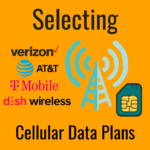


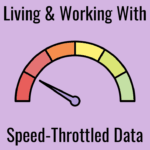

 Mobile Internet Resource Center (dba Two Steps Beyond LLC) is founded by Chris & Cherie of
Mobile Internet Resource Center (dba Two Steps Beyond LLC) is founded by Chris & Cherie of